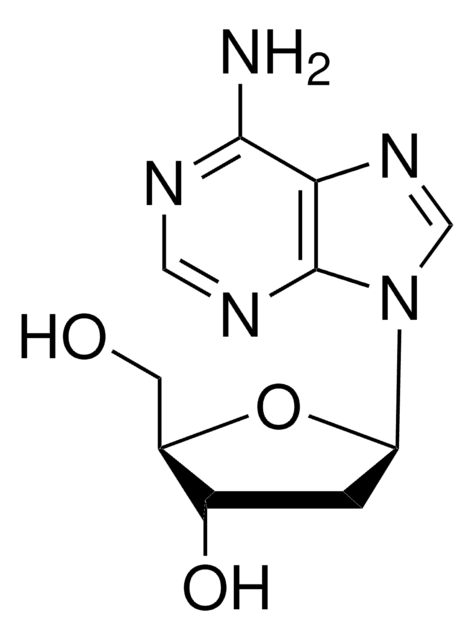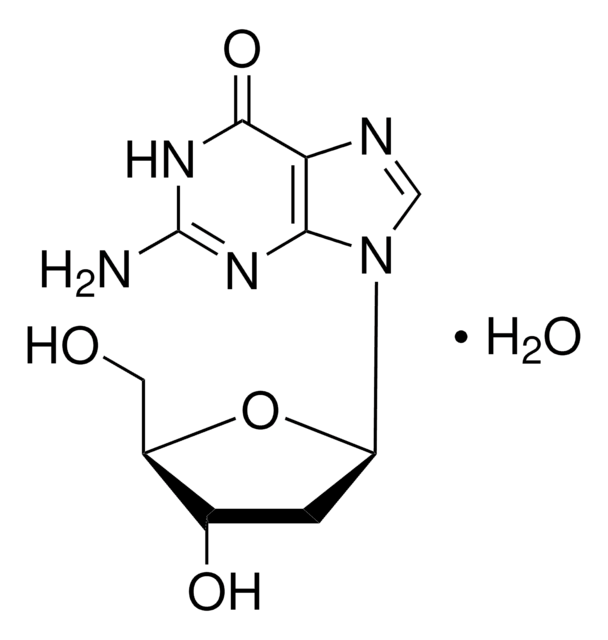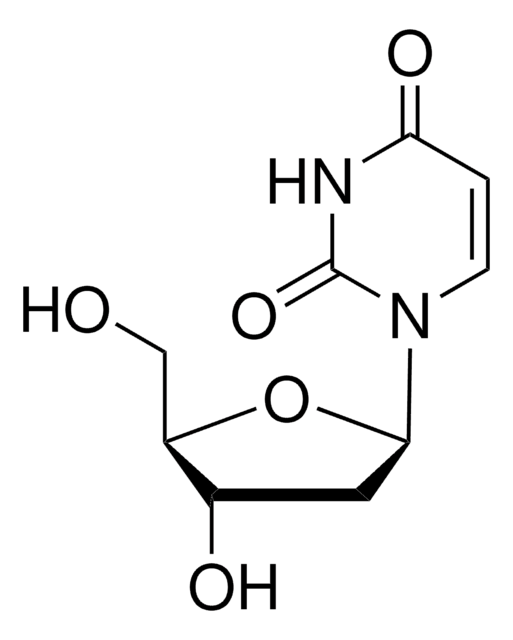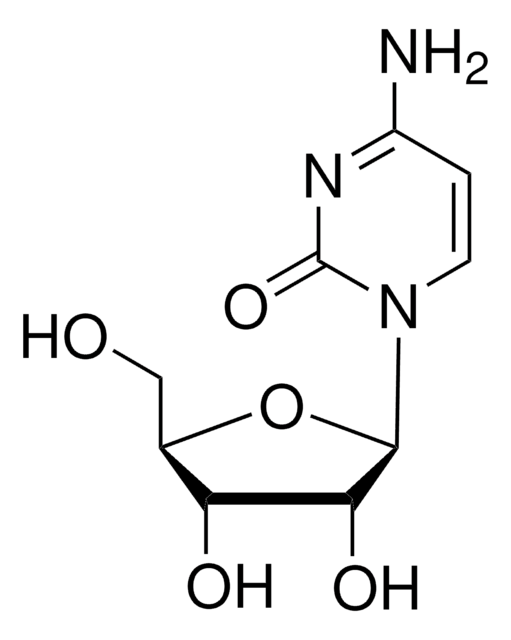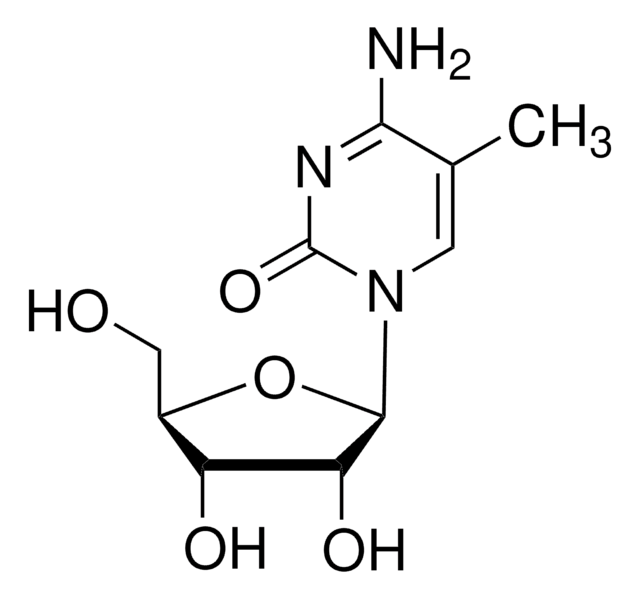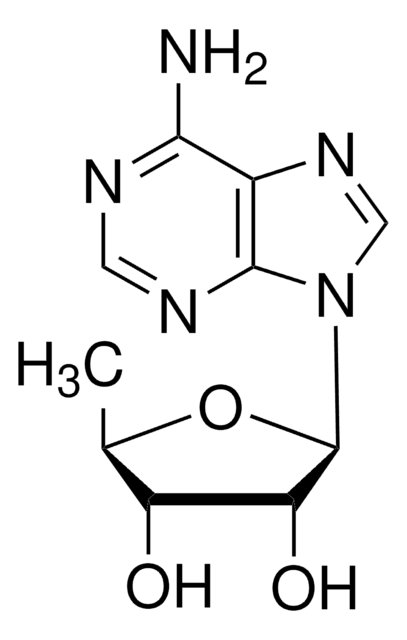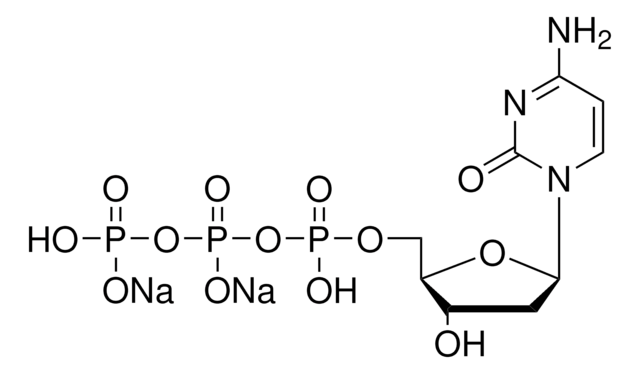D3897
2′-Deoxycytidine
≥99% (HPLC)
Synonyme(s) :
Cytosine deoxyriboside
About This Item
Produits recommandés
Source biologique
synthetic (organic)
Niveau de qualité
Pureté
≥99% (HPLC)
Forme
powder
Solubilité
water: 50 mg/mL, clear, colorless to very faintly yellow
Température de stockage
−20°C
Chaîne SMILES
NC1=NC(=O)N(C=C1)[C@H]2C[C@H](O)[C@@H](CO)O2
InChI
1S/C9H13N3O4/c10-7-1-2-12(9(15)11-7)8-3-5(14)6(4-13)16-8/h1-2,5-6,8,13-14H,3-4H2,(H2,10,11,15)/t5-,6+,8+/m0/s1
Clé InChI
CKTSBUTUHBMZGZ-SHYZEUOFSA-N
Description générale
Application
- as a substrate for Trypanosoma brucei cytidine deaminase (TbCDA) to measure its activity
- as a standard in the isolation and quantification of metabolite levels in murine tumor interstitial fluid by liquid chromatography-mass spectrometry (LC–MS)
- to study the role of autophagy in response to oncogenes and DNA replication stress
Actions biochimiques/physiologiques
Code de la classe de stockage
11 - Combustible Solids
Classe de danger pour l'eau (WGK)
WGK 3
Point d'éclair (°F)
Not applicable
Point d'éclair (°C)
Not applicable
Équipement de protection individuelle
Eyeshields, Gloves, type N95 (US)
Certificats d'analyse (COA)
Recherchez un Certificats d'analyse (COA) en saisissant le numéro de lot du produit. Les numéros de lot figurent sur l'étiquette du produit après les mots "Lot" ou "Batch".
Déjà en possession de ce produit ?
Retrouvez la documentation relative aux produits que vous avez récemment achetés dans la Bibliothèque de documents.
Les clients ont également consulté
Notre équipe de scientifiques dispose d'une expérience dans tous les secteurs de la recherche, notamment en sciences de la vie, science des matériaux, synthèse chimique, chromatographie, analyse et dans de nombreux autres domaines..
Contacter notre Service technique